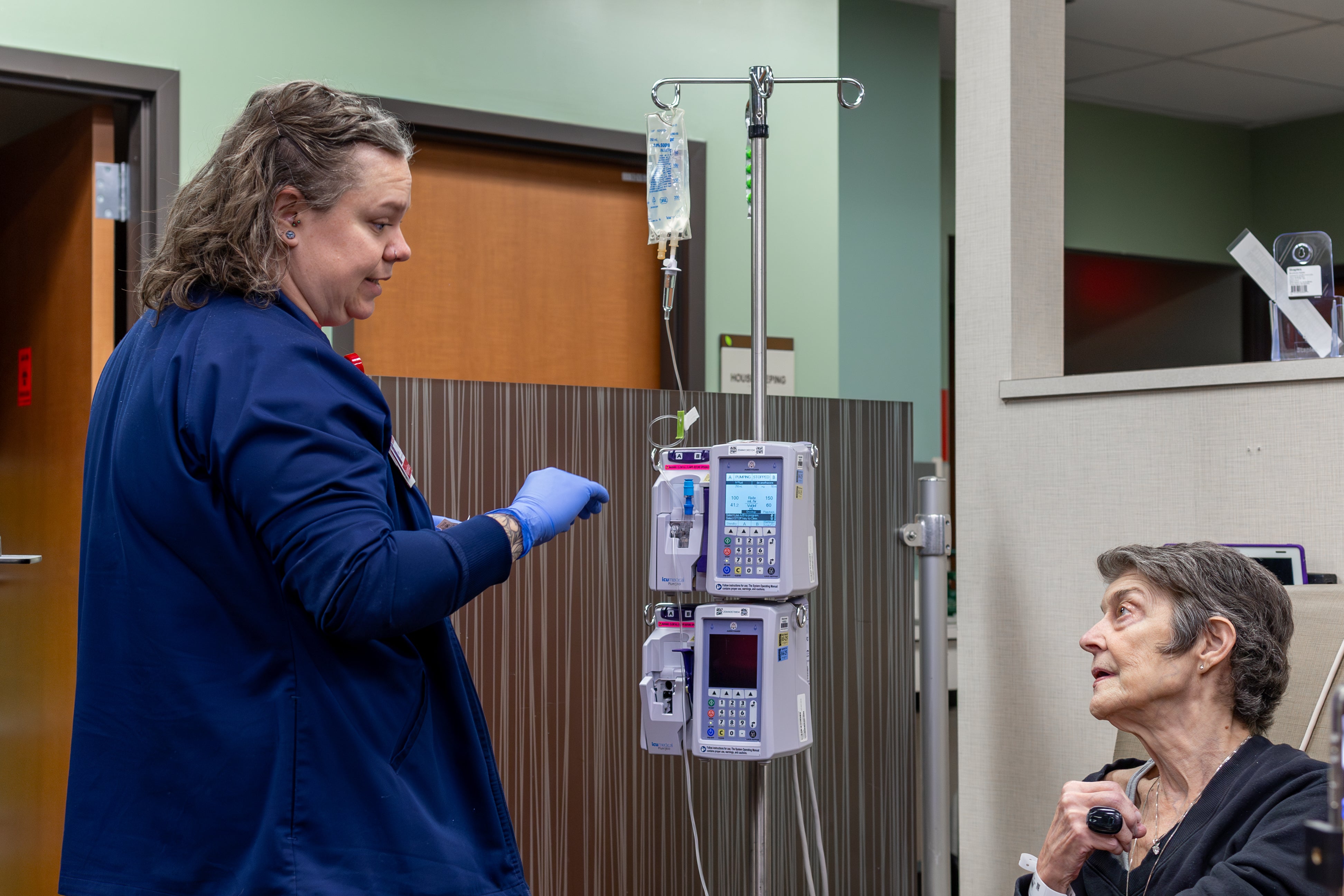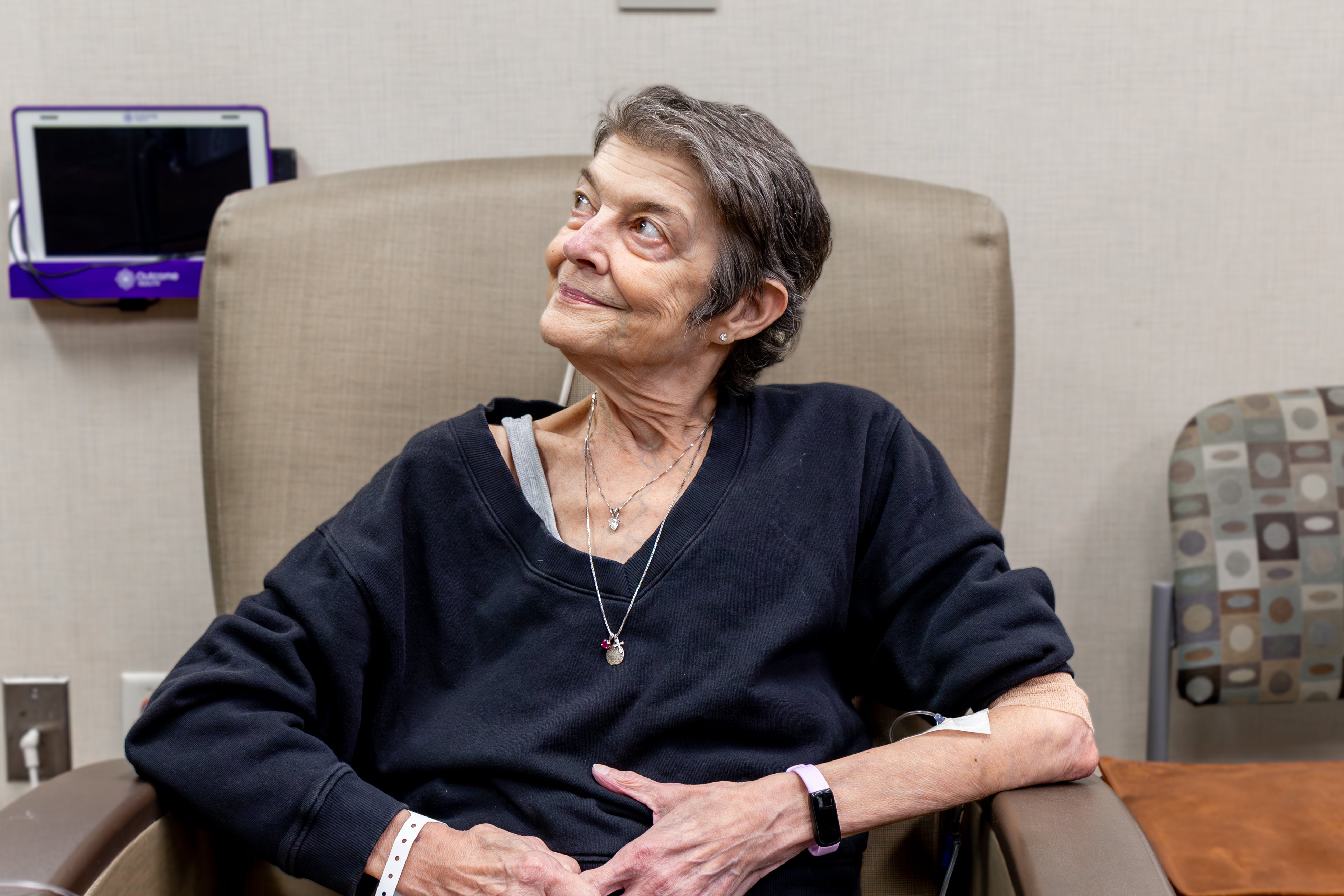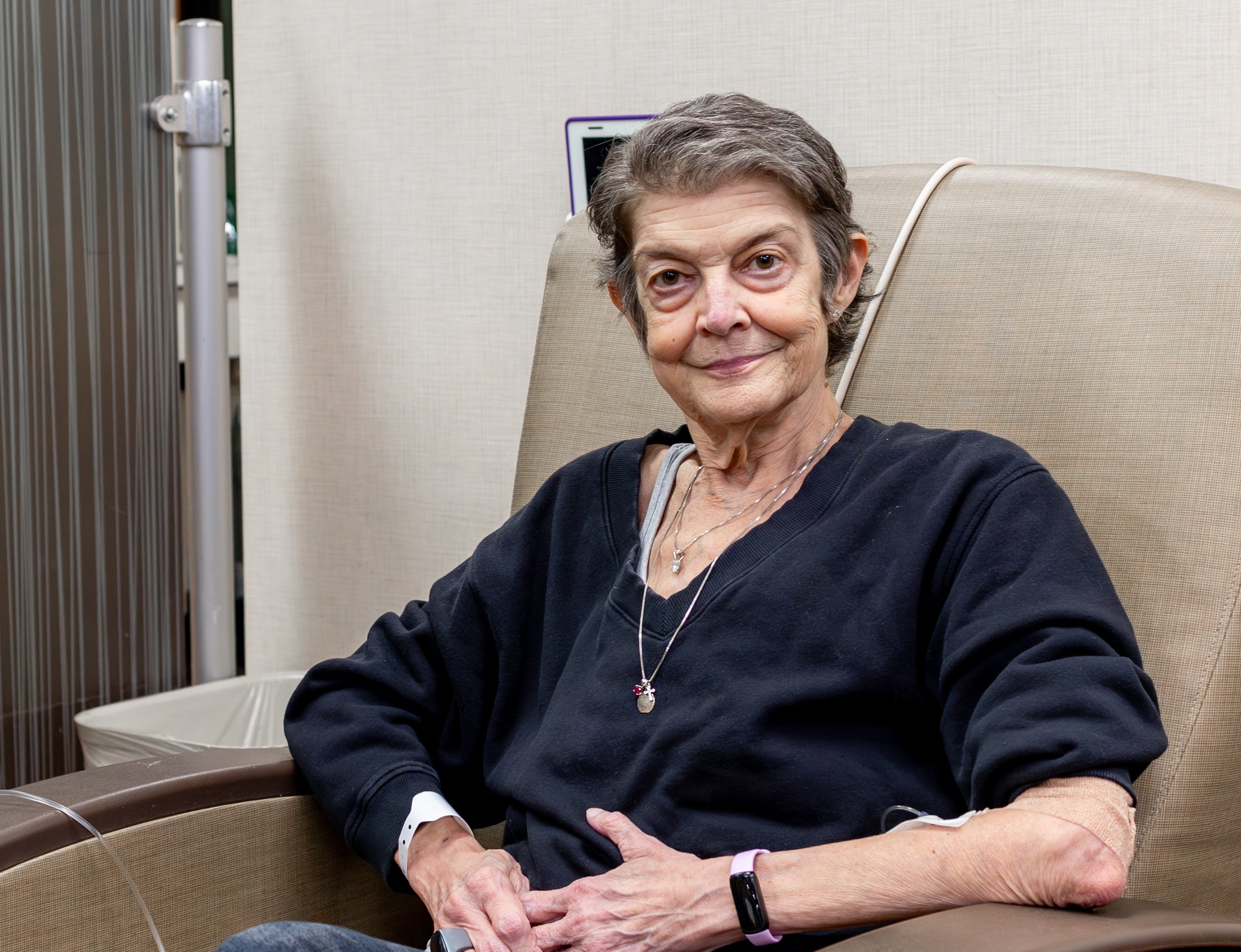“We weren’t sure what type of cancer I had; we just knew it was bad.”
Sara Snow was calm when her doctor told her she was dying. When the 65-year-old was diagnosed with stage 4 neuroendocrine carcinoma in May 2024, she was given 18 months to live. Knowing how serious her condition was, she and her doctor sprang into action.
“I was very calm, I think,” Snow said. “[My oncologist] was very straightforward but kind. I wanted to know the whole truth, so she told me: Six months without treatment, 18 months with. I made a split-second decision that I wanted to pursue treatment. I had a previously established relationship with Dr. [Kyle] Brett, and I knew how fortunate I was to have her as my doctor.”

Neuroendocrine carcinoma is a rare type of cancer that starts in cells called neuroendocrine cells—unique cells that have characteristics of both nerve cells and hormone-producing cells. They are found throughout the body and help regulate various functions by releasing hormones. Cancer can cause these cells to become malignant, leading to tumor growth. Snow’s doctors are unsure where her cancer originated because T-cells exist throughout the body.
“Some neuroendocrine carcinomas are low grade and don’t really require chemotherapy,” said Dr. Kyle Brett, clinical oncologist at OU Health Stephenson Cancer Center at Hillcrest. “But hers unfortunately was more high-grade, which means it was more aggressive.”

People with neuroendocrine carcinoma may feel tired, lose weight without trying or experience pain where the tumor is growing. If the tumor produces too many hormones, it can cause other symptoms like flushing (redness and warmth in the face), diarrhea or high blood pressure. In Snow’s case, the tumors affected her liver and lungs, causing pain and difficulty breathing.
“I had tumors in my liver, so I did have liver pain,” Snow said. “My liver is kind of stretched and deformed, as I understand it. The cancer is also in my lungs, so I have trouble breathing. I have oxygen with me.”
Doctors can test for neuroendocrine carcinoma by performing blood tests, scans, or tumor biopsies. For Snow, it was a CT scan for unrelated heart issues that revealed her cancer. She received several biopsies later to confirm the diagnosis.
“It was quite a surprise. It was just by chance,” she said.
Snow immediately began several months of traditional chemotherapy, during which she lost her hair and experienced nausea and weakness. The chemotherapy ultimately failed to treat her cancer.
“I was devastated, I was defeated,” Snow said. “I was doctored out; I was medicined out. I had seven hospitalizations. It was rough. We did it, I received great care, but it was taking a toll on me.”

“There are a lot of different ways cancer can learn to grow despite chemotherapy, and we don’t know specifically what caused that for [Sara],” said Dr. Brett. “Chemotherapy is not intelligent; it’s just a chemical. So, when all you’ve got is a hammer, everything is a nail. It’s not learning alongside the cancer, so the cancer eventually outsmarts the chemotherapy.”
After chemotherapy, Snow’s care team at the OU Health Stephenson Cancer Center at Hillcrest turned to a new treatment option never offered before at Hillcrest: bispecific T-cell engager (BiTE) therapy.
BiTE therapy is an advanced cancer treatment that helps the immune system target and destroy cancer cells more effectively. The immune system uses T-cells to find and kill harmful cells, including cancer cells. However, cancer cells can sometimes hide from T-cells, making it difficult for the immune system to attack them.
The treatment uses a special type of engineered antibody called a bispecific antibody. This antibody has two different binding sites: one that attaches to a T-cell and another that attaches to a cancer cell. By connecting T-cells directly to cancer cells, BiTE therapy helps T-cells recognize and attack cancer cells more efficiently. This process enhances the body’s natural ability to fight cancer.
“A way to think about it is if the T-cells are the police of the body, Snow’s first treatment put a bunch of policemen out on the streets looking for the ‘bad guy,’ the cancer,” Dr. Brett said. “The BiTE therapy shows the T-cells a mugshot and tells them where to look.”

Snow’s cancer has been very responsive to the BiTE therapy. While her tumors are shrinking, Snow is keeping a realistic mindset and taking life one day at a time. She is saving time and energy by getting treatment just five minutes from her home instead of driving nearly two hours to Oklahoma City for care.
Snow’s care at OU Health Stephenson Cancer Center at Hillcrest is part of a unique partnership that offers access to the expertise and resources of Oklahoma’s only National Cancer Institute-Designated Cancer Center. This collaboration helps bring advanced therapies and clinical trials closer to home for patients in northeast Oklahoma.
“Dr. Brett had been working on this for months,” Snow said. “When I received word that I could do the treatment here in Tulsa under Dr. Brett’s care, I was surprised and happy.”
“The idea of being able to build something that wasn’t in Tulsa for Tulsans, as a Tulsan, is really awesome,” Dr. Brett said. “Cancer patients’ time is super valuable because they don’t always have a lot of it left. To be able to give them their time back is super, super valuable.”
Snow is grateful for the care she’s received at both OU Health and Hillcrest, and she stresses that she hasn’t fought her battle against cancer alone.
“[Dr. Brett] has a wonderful nurse named Juanita, who was always there, and they were always supportive and available for phone calls. Juanita and Dr. Brett were always available to answer my endless questions and to provide whatever support I needed,” Snow said. “Every need that I’ve had has been met. I have neighbors bring me food and sit and talk with me. I have a stepson named Jacob who literally stopped going to work so he could stay home and take care of me. I’m so fortunate.”
“My cancer patients inspire me all the time; they help me live my life more meaningfully,” Dr. Brett said. “[Sara's] empathy for everybody, despite going through what she’s going through, has never wavered. She’s always been so kind to everybody around her. It just speaks to how strong she is.”
This journey taught Snow a lot about herself, including that she possessed a strength she never knew she had to make it through treatment. When asked what’s next for her, Snow said she plans to do some gardening.
“I didn’t know if I would see another season, another spring or summer. So, I’m going to buy some ferns,” she said. “It’s the little things. It’s coffee on the patio, it’s a quiet breakfast with fresh eggs my friend brought me, it’s a walk in the evening. It’s not the big things; it’s the little things.”
To learn more about the oncology clinics and infusion center at the OU Health Stephenson Cancer Center at Hillcrest, click here.

